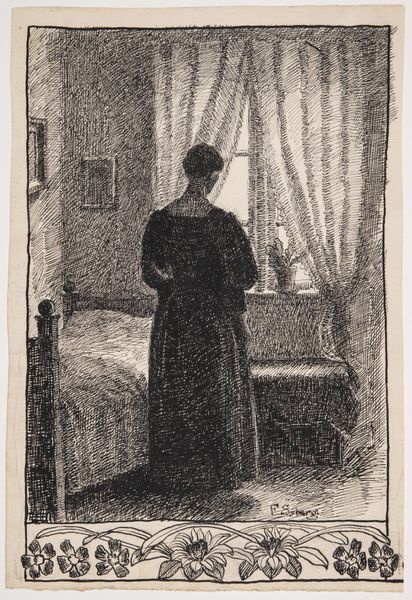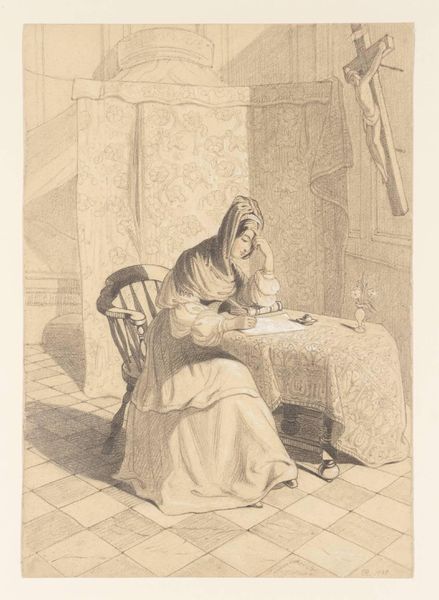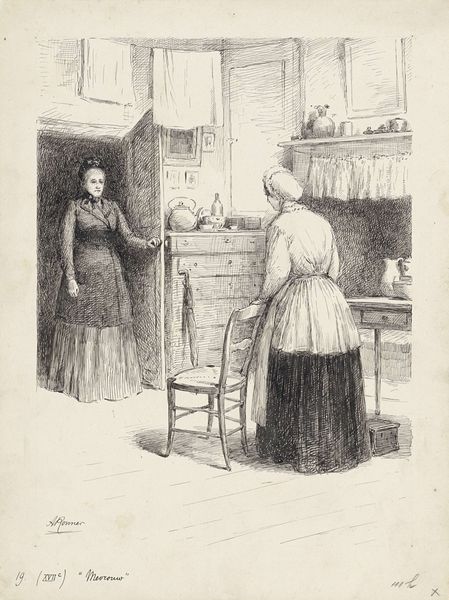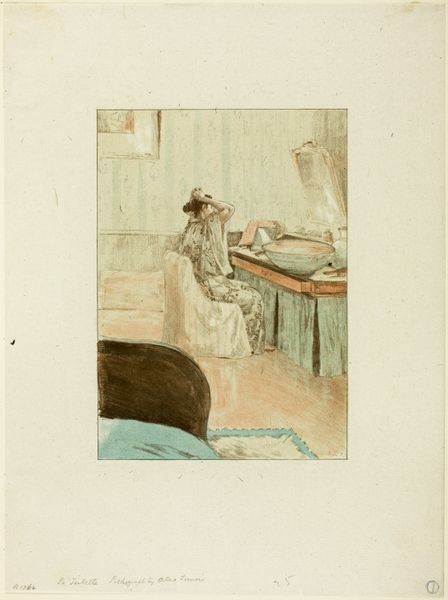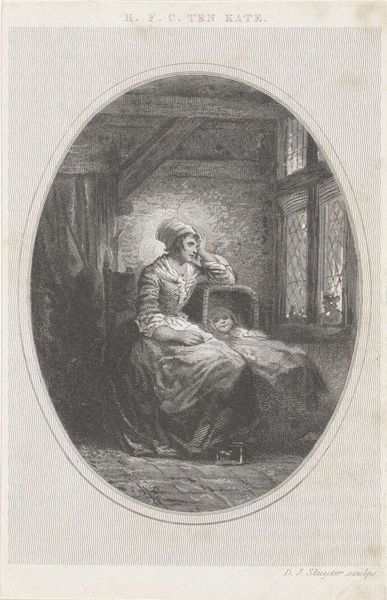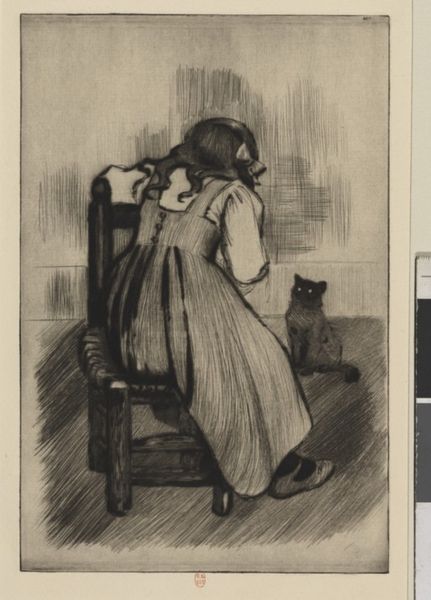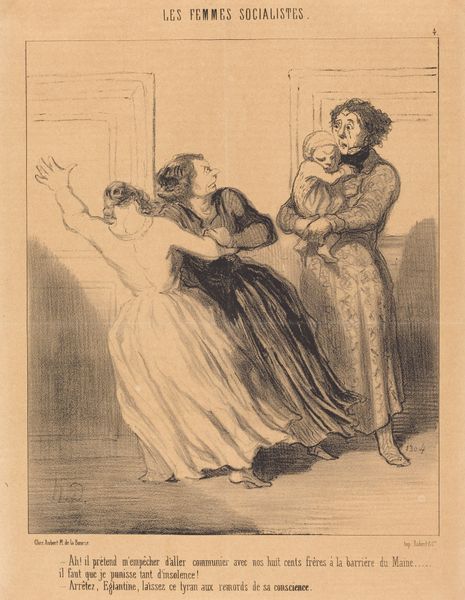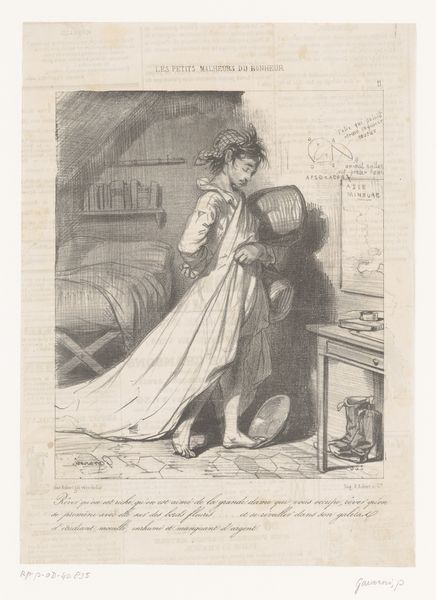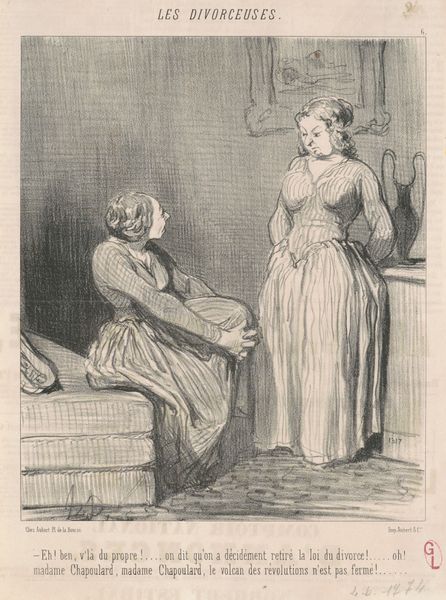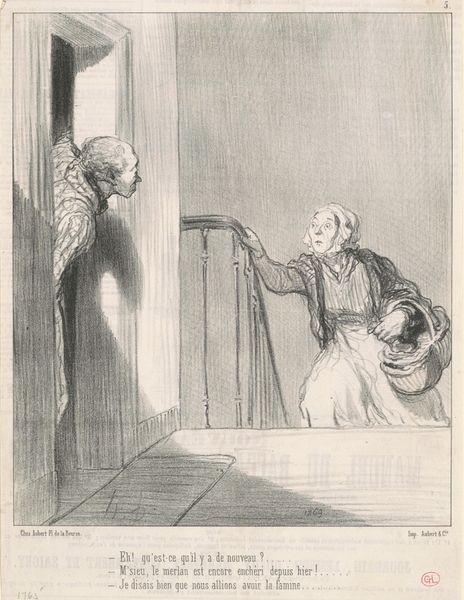
drawing, pencil
#
portrait
#
drawing
#
pencil
#
genre-painting
#
academic-art
#
realism
Dimensions: height 320 mm, width 240 mm
Copyright: Rijks Museum: Open Domain
Curator: Alfred Ronner’s drawing, "Nieuwjaar", which translates to "New Year," from 1893 offers a fascinating glimpse into domestic life during that period. Executed in pencil, the piece is firmly situated within the realms of realism and academic art. Editor: It strikes me as a work filled with melancholy, almost like an unfulfilled promise hangs in the air. The way the light gently caresses the scene, coupled with its composition—especially that draped bed—evokes a rather somber, reflective mood. Curator: Indeed. We can delve into the socio-cultural context to better grasp that atmosphere. Consider that late 19th-century genre paintings often served as a moral compass, showcasing idealized versions of reality but also acknowledging the harshness of everyday life. This piece is clearly trying to reflect the daily circumstances of that time. Editor: Agreed, and that pencil work truly renders everything with such crisp clarity. I'm intrigued by the lines, and how some areas receive heavier strokes that draw attention, whilst other zones soften, which gives form, and helps generate an affecting sense of depth. Curator: Note how the setting underscores social dynamics. The clock looming above, the sparse furnishings, and even the clothing of the figures tells us so much about working-class families in this period and offers a moment of reflexion of how time is such an important factor, perhaps, in someone's prosperity. It implicitly invites comparison and maybe reflection, and does so to a public audience. Editor: Visually, there’s also an amazing contrast. That shadowy area, almost like a cave where that bed stands against the other parts of the drawing—creating that perfect visual story, of darkness transitioning into light as the woman seeks to grab the child. Curator: Exactly. Ronner uses the space as a theatre, where gestures are imbued with meaning and become political as it displays class struggles. We might also read the space in gendered terms as we reflect on the power dynamics of family, expectations around motherhood, etc. Editor: Overall, it's just a compelling picture whose visual elements coalesce seamlessly into this narrative! Thank you! Curator: Thank you. A fascinating snapshot indeed; offering valuable insights for viewers today as well!
Comments
No comments
Be the first to comment and join the conversation on the ultimate creative platform.


